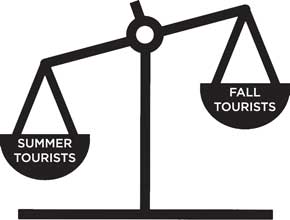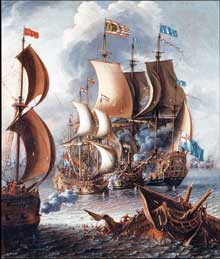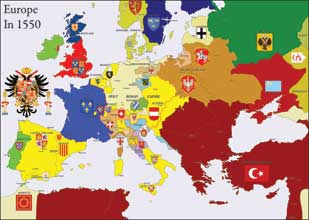As I see it, my effort to get the state to more effectively regulate our homeowner insurance rates was only marginally successful. I was proud of the fact that Senator Tom Davis had entered legislation that put more scrutiny on the Department of Insurance. However, we had spent two years uncovering a great inequity and we only got a temporary “fix.” Then, Stu Rodman and I asked ourselves this question. “If we know that the Charleston to Jacksonville corridor has the best fall weather in the South (because of the low risk of hurricanes), why does Beaufort County tourism drop 72% from summer to fall? That question intrigued us. Rather than just guessing, we set up a business-like process to answer the question. We would first assess the state and county’s ability to market tourism. That would require us to interview every tourism marketing office that dealt with marketing the state, Beaufort County, Charleston, and Savannah tourism. Then, we would inventory our tourism products to understand the depth of our product line.
We were not surprised after these interviews. It turns out, there was no coordinated marketing approach.
It was time to assess our tourism product line. Some of it was obvious: Penn Center, Mitchellville, Port Royal Sound, Charlesfort, our tidal waterways, old Beaufort, and our many historical points of interest.
But suddenly, we came upon a surprise archaeological report while reviewing the Charlesfort history on Parris Island. The surprise was Santa Elena. When we tried to dig deeper into the subject, there was not much depth. Dr. Rowland had written a piece thirty years ago. The Spanish town is lightly covered in the schoolbooks. The general gist, based on available research, was that Santa Elena was the capital of La Florida and had been occupied for 21 years. A cursory reading left me feeling somewhat empty. How important was Santa Elena? What was its role? How significant was it compared to Jamestown or Plymouth? Who were its leaders? Why did France and Spain choose Parris Island as their first major settlement?
When those answers were not available, I contacted Dr. Larry Rowland. He was the switchman for all early research. His advice? “If you want to seriously dig into Santa Elena, you have to get to know the nation’s two top 16th century historians – Dr. Eugene Lyon and Dr. Paul Hoffman.” This instruction immediately instilled fear. Why would these two celebrities want to give me any of their time? But they did. For six months I was on the telephone regularly with each of them.
With the help of Stu and Dr. Rowland, we uncovered a ton of information on Santa Elena. More importantly, with the support of Dr. Lyon and Dr. Hoffman, the three of us (Stu Rodman, Larry Rowland and I) came to this conclusion:
- Santa Elena was the capital of the first European colony to settle in what is now the United States. (We can confirm that date as 1571.)
- Santa Elena was the capital of a colony named La Florida. That colony extended from Newfoundland to the Keys and from the Atlantic to at least the Mississippi River.
- Santa Elena was settled 41 years before Jamestown and 54 years before Plymouth, Mass. By 1569 it had over 300 settlers.
- Unlike the English settlers at Jamestown and Plymouth, the Spanish did not just happen to land at Port Royal Sound. France and Spain both planned to settle there. Spain actually identified and named the sound Punta de Santa Elena in 1526. By 1559, King Philip II of Spain informed his Viceroy of New Spain (Mexico) that he wanted to first settle at Santa Elena. By February of 1565, his first governor of La Florida, Pedro Menendez de Aviles, recommended to the King, “We need to go to Santa Elena first.” Port Royal Sound was selected because it was the harbor that had to be protected from French corsairs that could threaten its returning treasure fleet. It was also selected as the Atlantic terminal for the inland road that was to be linked to the silver mines in Mexico. It was also chosen to be the hub for future exploration of the inland route to China. Santa Elena was Spain’s choice to be the Grand Central Station for their settlement of North America.
- Virtually everything that we teach our children today about how America was discovered is incorrect. The first settlement was neither Jamestown nor English. It was Spanish. The first military garrison was St. Augustine. In my opinion, the first major settlement was Santa Elena.
- Our textbooks say that the Europeans settled America in a series of independent acts. First, there was Jamestown. Then there was Plymouth. It did not happen that way. France and Spain were in a continuous religious war with each other. France raced to the Florida peninsula in 1565 to strengthen its Fort Carolina position near Jacksonville and to remove Spain from the continent. Spain raced to remove France and to permanently settle its colony. America was settled like one continuous movie series.
- The protestant reformation had a major impact on why France and Spain wanted to settle America.









